Muscle Scraping & Cupping
Muscle scraping and cupping are both alternative therapy techniques that are sometimes used to address muscle tension, pain, and other musculoskeletal issues. Here's an overview of each technique:
1. Muscle Scraping (Instrument Assisted Soft Tissue Mobilization, IASTM):
- Muscle scraping involves the use of specialized tools, typically made of metal or plastic, to apply pressure and friction to the skin and underlying soft tissues.
- The practitioner glides the tool over the skin in a specific pattern, direction, or area of the body, applying varying amounts of pressure to target areas of muscle tension, adhesions, or scar tissue.
- The goal of muscle scraping is to break up adhesions, scar tissue, and restrictions within the soft tissues, promote circulation, and improve tissue mobility, flexibility, and function.
- Muscle scraping is often used in conjunction with other manual therapy techniques such as massage, stretching, and exercise to enhance its effectiveness and achieve optimal results.
- Common conditions treated with muscle scraping include muscle strains, tendonitis, ligament sprains, myofascial pain syndrome, and overuse injuries.
- Muscle scraping should be performed by trained practitioners who have a thorough understanding of anatomy, physiology, and proper technique to ensure safe and effective treatment.
- Cupping therapy involves the application of suction to the skin using special cups, typically made of glass, silicone, or plastic.
- The cups are placed on the skin and create a vacuum effect, drawing the skin and underlying soft tissues into the cup.
- Cupping therapy can be performed using various techniques, including stationary cupping (leaving the cups in place for a period of time) or moving cupping (gliding the cups over the skin).
- The suction created by cupping therapy helps stimulate blood flow, promote lymphatic drainage, and release tension in the muscles and fascia.
- Cupping therapy may leave temporary marks or bruising on the skin, known as "cupping marks," which typically resolve within a few days to a week.
- Common conditions treated with cupping therapy include muscle tension, pain, inflammation, respiratory conditions, and stress-related disorders.
- Cupping therapy is often used as part of traditional Chinese medicine (TCM) practices, but it has gained popularity in Western countries as well, particularly among athletes and individuals seeking alternative therapies for pain relief and relaxation.
Both muscle scraping and cupping therapy are considered safe when performed by trained practitioners and can be effective in relieving muscle tension, promoting circulation, and enhancing tissue mobility. However, it's important to consult with a healthcare professional before undergoing any alternative therapy to ensure that it's appropriate for your specific condition and medical history. Additionally, these techniques should be used as part of a comprehensive treatment plan that may include other therapies, exercises, and lifestyle modifications for optimal results.
